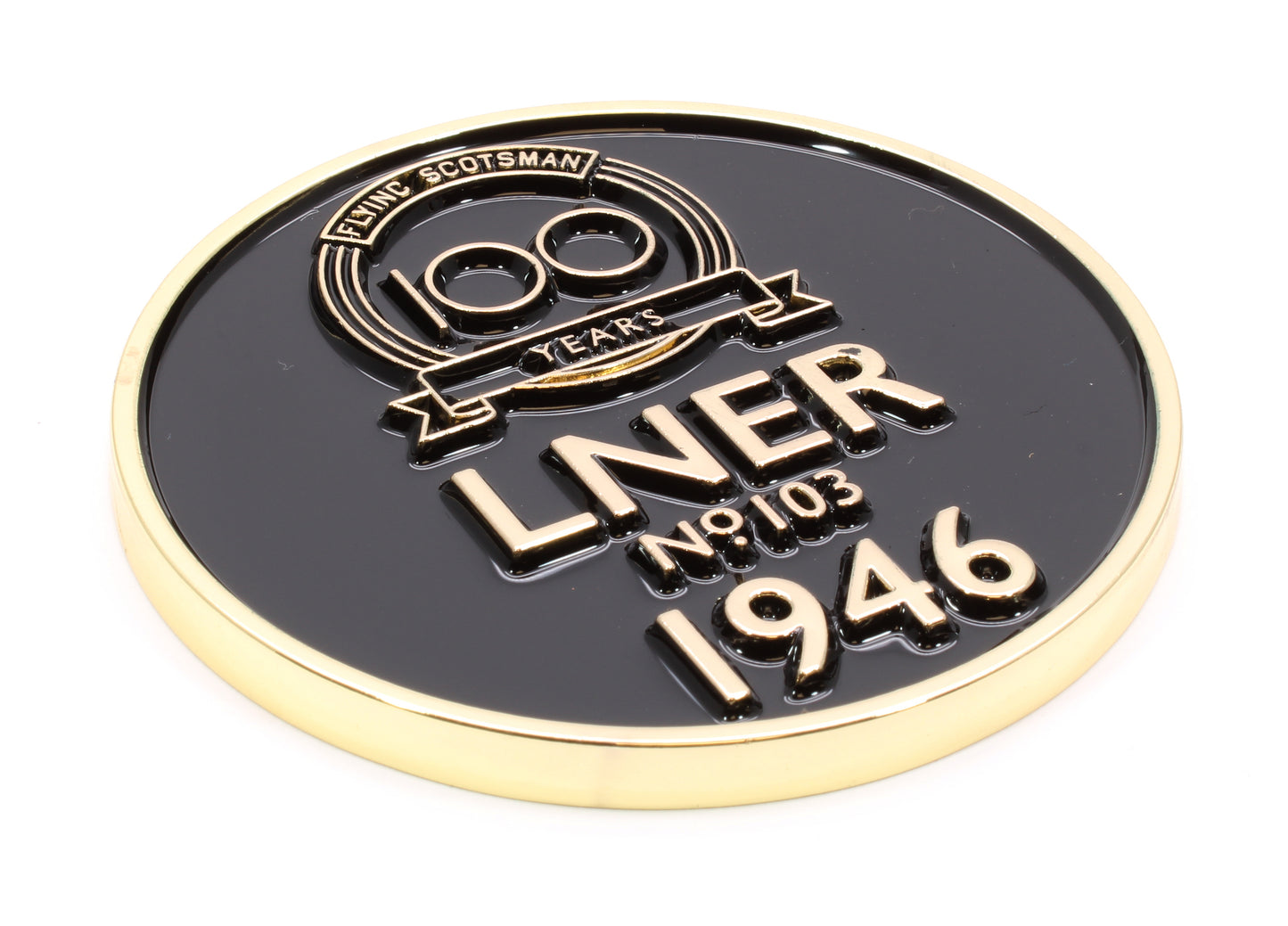Hornby R30210A Hornby Dublo LNER A3 Class 4-6-2 103 'Flying Scotsman' Gold Plated Limited Edition Steam Locomotive














Product Details
| SKU | HOR-R30210A |
|---|---|
| Vendor | Hornby |
| Categories | Best selling products Era 3 HO-OO Hornby Hornby Dublo In stock Items Latest Releases Locomotives New products OO Gauge Latest Releases OO Gauge Locomotives OO Gauge scale OO Gauge Steam Locomotives Steam Locomotives |
| Scale | OO Gauge |
| Share | |
| Features |
|
Product Description
Limited Edition
The largest of the constituent companies that would become the famous LNER was the GNR, and their Chief Mechanical Engineer naturally adopted the same position in the newly formed company, a man by the name of Herbert Nigel Gresley. As the brains behind the locomotive stock of the GNR, he had commissioned a new high speed passenger locomotive class to serve the GNR’s London to York main line. These became the A1 locomotive class, before a subsequent rebuild gave them the designation of the A3 class. One such example of this new and powerful class was named after the 10:00am service between London and Edinburgh, the named Special Scotch Express, or as it was renamed in 1924 the Flying Scotsman.
The locomotive in question, number 1472, was originally outshopped from the GNR’s Doncaster Works as a class A1 with GNR colouring, lettering and numbering before being renumbered and named in 1924 to promote the LNER’s Flying Scotsman service. Despite its new name and number, 4472 Flying Scotsman herself did not actually pull the Flying Scotsman service until 1928, spending the first four years of its life undertaking promotional work and light duties for the LNER, such as being its star exhibit at both the 1924 and 1925 British Empire Exhibition.
Relatively little of note would occur in the locomotives life and service for the next twenty years, with main changes consisting of her coupling with a corridor tender in 1928 (this allowed the locomotive to run non-stop between London and Edinburgh as the crew could be swapped via the tender mid run) before being reverted to the original tender in 1936. The game of LNER musical chairs did not stop here however, with the tender again being swapped in 1938 for a streamlined tender, with much the same appearance as a corridor tender without the corridor. Flying Scotsman would retain her streamlined tender until her withdrawal from British Railways service, numbered 60103, in 1963.
This Hornby Dublo model features the locomotive as it would have appeared in 1924 at the British Empire Exhibition. The locomotive is finished in a gleaming green paint which couples with the diecast boiler to create a finish close to that that could have been seen on the full size locomotive. The model features a strong 5 pole motor, cab detailing including crew figures, a diecast body and is DCC ready.













